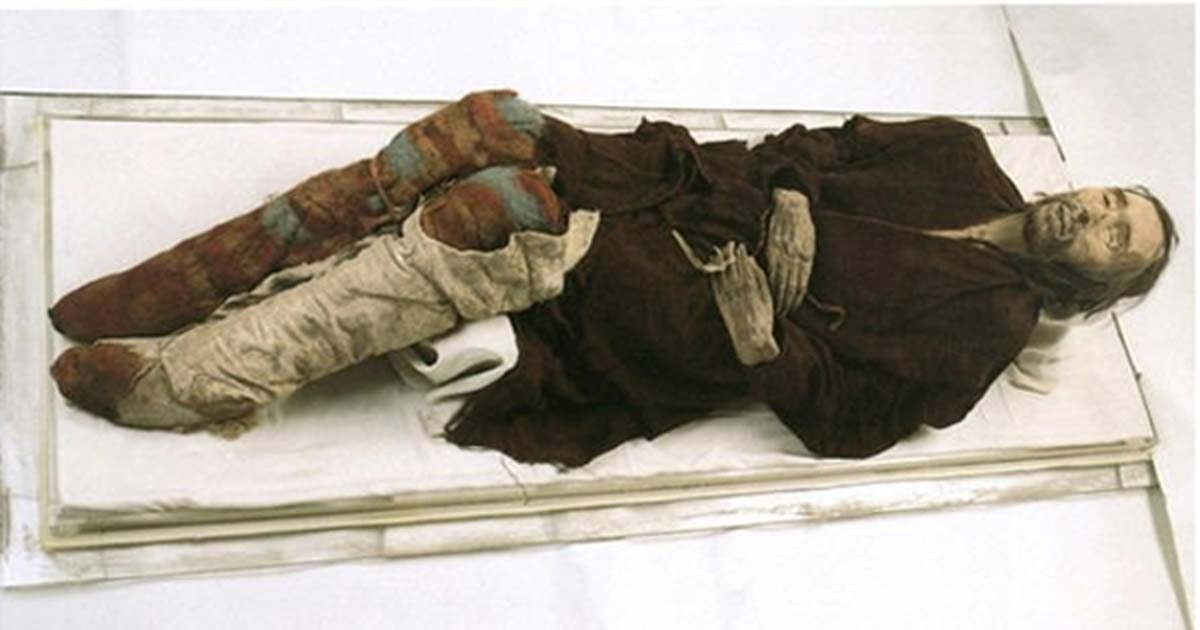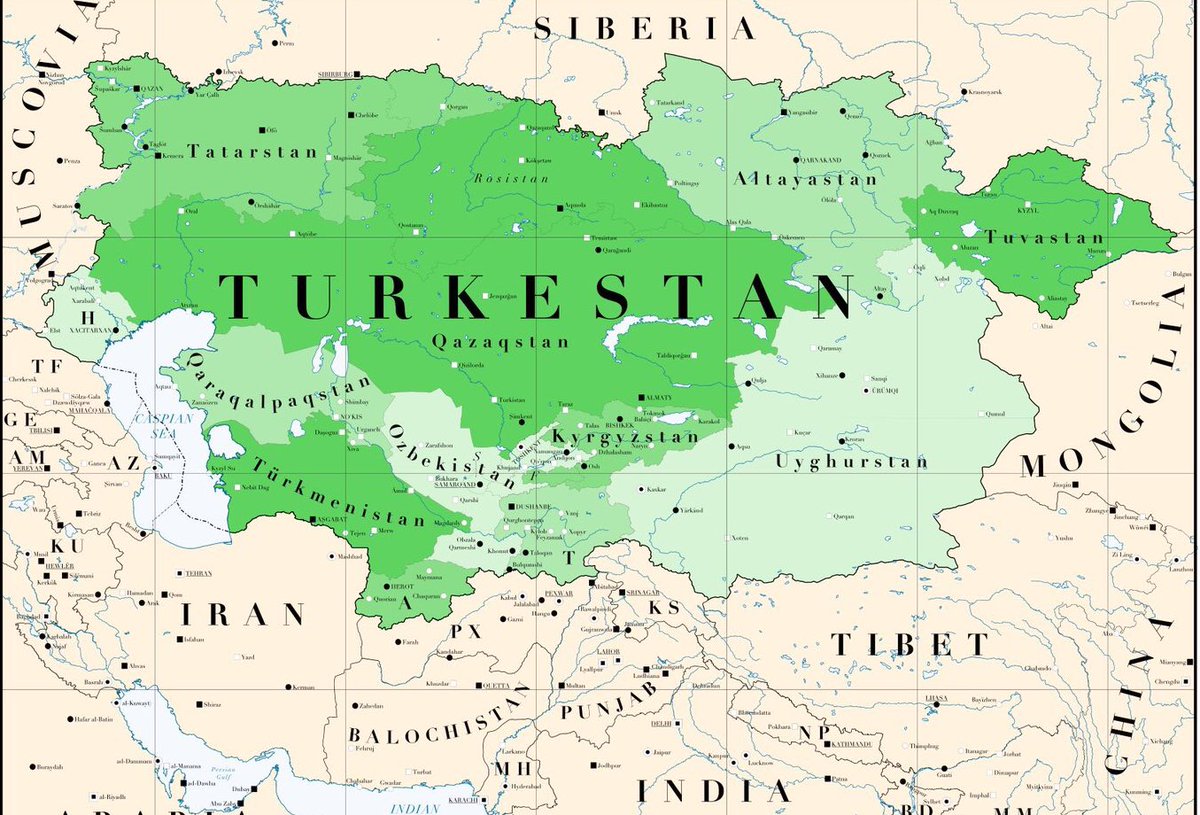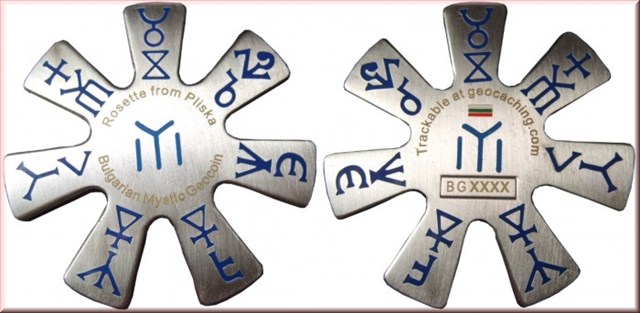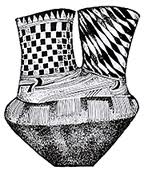


R1 populations spread genes for light skin, blond hair and red hair. There is now strong evidence that both R1a and R1b tribes during the Bronze Age contributed to the diffusion of the A111T mutation of the SLC24A5 gene, which explains apporximately 35% of skin tone difference between Europeans and Africans, and most variations within South Asia. The distribution pattern of the A111T allele (rs1426654) of matches almost perfectly the spread of Indo-European R1a and R1b lineages around Europe, the Middle East, Central Asia and South Asia.
eupedia.com/europe/Haplogroup_R1a_Y-DNA#Turkic
Based on descendant testing, it appears most likely that the sultans of the Ottoman dynasty belonged to haplogroup R1a-Z93. This has not been officially confirmed yet. All sultans of the Ottoman Empire (1299-1922) descend in patrilineal line from Osman I, making it one of the longest reigning Y-chromosomal lineage in history.
King Béla III of Hungary (c. 1148-1196) was tested by Olasz et al. (2018). His Y-DNA was identified as R1a (possibly the Z93 branch and Z2123>Y934 clade based on STR values, but unconfirmed), while his mtDNA was H1b. Béla was a member of the Árpád dynasty, which ruled over Hungary (and Croatia from 1091) from the arrival of the Magyars in the 9th century until 1301.
The Serbian-American scientist and inventor Nikola Tesla (1856-1943) is most famous for his work on the modern alternating current (AC) electricity supply system, the induction motor, the Tesla coil, etc. His haplogroup was first thought to be I2a-L147.2+ based on the results of another (unrelated) Tesla from the same village as his father. However, the testing of actual relatives, published on the Serbian DNA Project at Poreklo, showed that his Y-DNA line was more probably R1a-M458 (L1029 subclade).

Seimeni IYI – Simbolistica IYI este foarte veche, regăsindu-se în ideogramele proto-elamite din mileniul III î.e.n., descoperite în Iran, precum şi pe sigiliile civilizaţiei Harappa, dezvoltată cu peste 5200 de ani în urmă în Valea Indusului. Incadrarea stâlpului suplicatoriu în Y între două simboluri face trimitere la reprezentarea cultului Pomului Vieţii în civilizaţiile sumeriană, asiriană, egipteană, precum şi mayaşă, reprezentări în care Pomul Vieţii este încadrat între cel puţin două siluete umane sau divine aflate în poziţii sugerând venerarea, amplasate la stânga şi la dreapta Pomului Vieţii. Grupul de simboluri IYI se regăseşte şi în China, într-o pictogramă desenată pe o lespede de piatră, din camera funerară a Piramidei Albe, ridicată în anul 684 e.n. de împăratul Gaozong, care azi seamănă cu un munte – Muntele Liangshan, aflat la 80 km de oraşul Xi’an – în care a fost descoperită o mumie caucaziană cu părul blond.Limba protobulgară (sau bolğar, bulgara veche) a fost limba vorbită de protobulgari, acum dispărută. Foarte puține izvoare există despre această limbă și puține sunt înțelese. Este considerată de mulți lingviști a fi fost o limbă turcică din ramura ogură (oghură; în limba turcă oğur) și se crede a fi fost vorbită în statele fondate de protobulgari: Bulgaria Mare (în latină Magna Bulgaria) (în secolul al VII-lea), Bulgaria dunăreană (sec. VII-IX) și Bulgaria de pe Volga (până în secolele XIII, XIV). A fost strâns înrudită cu limba ciuvașă (astăzi singura limbă turcică ogură). Pe stragul statului ciuvaş se regăseşte grupul de simboluri IYI.

The Oghurs were the first wave of Turkic-speakers to move west across the steppe. They were followed westward by the Oghuz Turks and then the Kipchaks. Most of the Oghuz turned southwest and left their languages in Turkmenistan, Azerbaijan and Turkey while the Kipchaks remained on the steppe and became the modern Kazakhs. The Onogurs, whose name in Turkic possibly ‘ten tribes’, are also mentioned from 463 until the eighth century when they were absorbed by the Bulgars. The Khazars emerged east of the Bulgars around 630 and soon replaced them. They were a mixture of Bulgars, other Oghurs, Gokturks and others. With the formation of the Bulgar and Khazar states the term ‘Oghur’ gradually disappears from the records. The Chuvash people continue to speak an Oghur language which is somehow connected to that of the Volga Bulgarians. wikipedia.org/wiki/Oghur_(tribe)

“Tamga,” or “tamag,” literally means a stamp or seal in Mongolian. Tamgas are also stamped using hot irons on domesticated animals such as horses in present-day Mongolia and others to identify that the livestock belongs to a certain family while they graze during the day on their own. Among modern Turkic peoples, the tamga is a design identifying property or cattle belonging to a specific Turkic clan, usually as a cattle brand or stamp. The Turks who remained pastoral nomad kings in eastern Anatolia and Iran, however, continued to use their clan tamgas and in fact, they became high-strung nationalistic imagery. The Ak Koyunlu and Kara Koyunlu, like many other royal dynasties in Eurasia, put their tamga on their flags and stamped their coinage with it. For the Turks who never left their homeland of Turkestan in the first place, it has remained what it originally was: a cattle brand and clan identifier.

According to Ottoman tradition, Osman I, the founder of Ottoman Empire, was a descendent of the Kayı tribe. wikipedia.org/wiki/Ertugrul Hungarian scholar Gyula Németh (1969) links Kayı(ğ) with to another people whom Muslim scholars called Qay, identified with the (para-)Mongolic-speaking Xí (< MC *ɣiei 奚) in Chinese sources, Dad-pyi in Old Tibetan, and Tatabï on Orkhon inscriptions In the Middle Ages, part of the Kayi tribe moved from Central Asia to what is now Ukraine, they are known in the Old Russian Chronicles as kovuy and kaepichi[10]. According to the famous Soviet and Russian linguist and turkologist A. V. Superanskaya, the origin of the name of the city of Kiev is associated with the Kayı tribe: “As ethnographers testify, ethnically “pure” peoples do not and cannot exist. On the contrary, new peoples arise from ethnic mixes of two or more peoples, usually assimilating the best features of each.” With the Russified name Kaitag (Mountain Kayı) the Kayı tribe played a prominent role in the history of the Caucasus, and now the Kaitag language is classified as one of five dialects of the Kumyk language, which for ten centuries (10–19 cc.) was a lingua franca in the North Caucasus. Kaitag principality was a leading component of the Shamkhalate of Kazi-Kumukh state on the Caspian western seaboard that in different forms lasted from the 8th to the 19th centuries. wikipedia.org/Kayi Tribe#History

The Dulo clan was a ruling dynasty of the Bulgars, an elite caste[2] intimately related to the origin and activity of the Huns and Western Turkic Khaganate.[3] Particularly, it is said that the Dulo descended from the rulers of Great Bulgaria, which was founded by Khan Asparukh‘s (679–700) father on the steppes of Ukraine.[4] This state was a centralized monarchy from its inception, unlike previous Hunno-Turkic political entities, which were tribal confederations.

Romanians have an even greater diversity of R1a clades than Bulgarians, despite not being speakers of a Slavic language. In fact, not all Romanian R1a is of Slavic origin. It includes Germanic clades (L664>S2894>YP285>YP282 and Z283), Iranian ones (Z93) and Jewish ones (CTS6). The Slavic clades represented include L1029 (under M458>CTS11962) and YP951 (under CTS1211>Y35>CTS3402>YP237>). Historically, no other part of Europe was invaded a higher number of times by steppe peoples than the Balkans. Chronologically, the first R1a invaders might have come with the westward expansion of the Sredny Stog culture (from 4200 BCE), which led the way to a succession of steppe migrations that lasted for over 2,000 years until the end of the Yamna culture (3500-2000 BCE). These early invasions from the Steppe were probably conducted in majority by R1b men, accompanied by a small number of R1a. Then came the Thracians (1500 BCE), followed by the Illyrians (around 1200 BCE), and much later the Huns and the Alans (400 CE), the Avars, the Bulgars and the Serbs (all around 600 CE), and the Magyars (900 CE), among others. These peoples originated from different parts of the Eurasian Steppe, anywhere between Eastern Europe and Central Asia, thus contributing to the relatively high diversity of R1a subclades observed in Carpathians and the Balkans today, especially in Bulgaria and Romania. Nevertheless, the vast majority of R1a in Southeast Europe today appears to be of Slavic origin.


Proto-Indo-Iranian speakers, the people who later called themselves ‘Aryans’ in the Rig Veda and the Avesta, originated in the Sintashta-Petrovka culture (2100-1750 BCE), in the Tobol and Ishim valleys, east of the Ural Mountains. It was founded by pastoralist nomads from the Abashevo culture (2500-1900 BCE), ranging from the upper Don-Volga to the Ural Mountains, and the Poltavka culture (2700-2100 BCE), extending from the lower Don-Volga to the Caspian depression.
Horse-drawn war chariots seem to have been invented by Sintashta people around 2100 BCE, and quickly spread to the mining region of Bactria-Margiana (modern border of Turkmenistan, Uzbekistan, Tajikistan and Afghanistan). Copper had been extracted intensively in the Urals, and the Proto-Indo-Iranians from Sintashta-Petrovka were exporting it in huge quantities to the Middle East. They appear to have been attracted by the natural resources of the Zeravshan valley for a Petrovka copper-mining colony was established in Tugai around 1900 BCE, and tin was extracted soon afterwards at Karnab and Mushiston. Tin was an especially valued resource in the late Bronze Age, when weapons were made of copper-tin alloy, stronger than the more primitive arsenical bronze. In the 1700’s BCE, the Indo-Iranians expanded to the lower Amu Darya valley and settled in irrigation farming communities (Tazabagyab culture). By 1600 BCE, the old fortified towns of Margiana-Bactria were abandoned, submerged by the northern steppe migrants. The group of Central Asian cultures under Indo-Iranian influence is known as the Andronovo horizon, and lasted until 800 BCE.
The Indo-Iranian migrations progressed further south across the Hindu Kush. By 1700 BCE, horse-riding pastoralists had penetrated into Balochistan (south-west Pakistan). The Indus valley succumbed circa 1500 BCE, and the northern and central parts of the Indian subcontinent were taken over by 500 BCE. Westward migrations led Old Indic Sanskrit speakers riding war chariots to Assyria, where they became the Mitanni rulers from circa 1500 BCE. The Medes, Parthians and Persians, all Iranian speakers from the Andronovo culture, moved into the Iranian plateau from 800 BCE. Those that stayed in Central Asia are remembered by history as the Scythians, while the Yamna descendants who remained in the Pontic-Caspian steppe became known as the Sarmatians to the ancient Greeks and Romans.
The Indo-Iranian migrations have resulted in high R1a frequencies in southern Central Asia, Iran and the Indian subcontinent. The highest frequency of R1a (about 65%) is reached in a cluster around Kyrgyzstan, Tajikistan and northern Afghanistan. In India and Pakistan, R1a ranges from 15 to 50% of the population, depending on the region, ethnic group and caste. R1a is generally stronger is the North-West of the subcontinent, and weakest in the Dravidian-speaking South (Tamil Nadu, Kerala, Karnataka, Andhra Pradesh) and from Bengal eastward. Over 70% of the Brahmins (highest caste in Hindusim) belong to R1a1, due to a founder effect.
Maternal lineages in South Asia are, however, overwhelmingly pre-Indo-European.

The present-day inhabitants of Central Asia, from Xinjiang to Turkey and from the Volga to the Hindu Kush, speak in overwhelming majority Turkic languages. This may be surprising as this corresponds to the region where the Indo-Iranian branch of Indo-European speakers expanded, the Bronze-Age Andronovo culture, and the Iron-Age Scythian territory. So why is it that Indo-European languages only survives in Slavic Russia or in the southern part of Central Asia, in places like Tajikistan, Afghanistan or some parts of Turkmenistan ? Why don’t the Uyghurs, Uzbeks, Kazakhs and Kyrgyzs, or the modern Pontic-Caspian steppe people (Crimean Tatars, Nogais, Bashkirs and Chuvashs) speak Indo-European vernaculars ? Genetically these people do carry Indo-European R1a, and to a lesser extent also R1b, lineages. The explanation is that Turkic languages replaced the Iranian tongues of Central Asia between the 4th and 11th century CE. Because R1A males made children with many turk woman so mother language prevailed!
Proto-Turkic originated in Mongolia and southern Siberia with such nomadic tribes as the Xiongnu. It belongs to the Altaic linguistic family, like Mongolian and Manchu (some also include Korean and Japanese, although they share very little vocabulary in common). It is unknown when Proto-Turkic first emerged, but its spread started with the Hunnic migrations westward through the Eurasian steppe and all the way to Europe, only stopped by the boundaries of the Roman Empire.
The Huns were the descendants of the Xiongnu. Ancient DNA tests have revealed that the Xiongnu were already a hybrid Eurasian people 2,000 years ago, with mixed European and North-East Asian Y-DNA and mtDNA. Modern inhabitants of the Xiongnu homeland have approximately 90% of Mongolian lineages against 10% of European ones. The oldest identified presence of European mtDNA around Mongolia and Lake Baikal dates back to over 6,000 years ago.
It appears that Turkic quickly replaced the Scythian and other Iranian dialects all over Central Asia. Other migratory waves brought more Turkic speakers to Eastern and Central Europe, like the Khazars, the Avars, the Bulgars and the Turks (=> see 5000 years of migrations from the Eurasian steppes to Europe). All of them were in fact Central Asian nomads who had adopted Turkic language, but had little if any Mongolian blood. Turkic invasions therefore contributed more to the diffusion of Indo-European lineages (especially R1a1) than East Asian ones.
Turkic languages have not survived in Europe outside the Pontic-Caspian steppe. Bulgarian language, despite being named after a Turkic tribe, is actually a Slavic tongue with a mild Turkic influence. Hungarian, sometimes mistaken for the heir of Hunnic because of its name, is in reality an Uralic language (Magyar). the The dozens of Turkic languages spoken in the world today have a high degree of mutual intelligibility due to their fairly recent common origin and the nomadic nature of its speakers (until recently). Its two main branches Oghuz and Oghur could be seen as two languages about as distant as Spanish and Italian, and languages within each branch like regional dialects of Spanish and Italian.

eupedia.com/history/5000_years_of_steppe_migrations_into_europe Another paternal lineage found in the Yamna culture that seem to have spread with the Indo-European migrations is I2a2a-L701. Haplogroup I2 was the main lineage of Mesolithic Europeans and was found throughout the continent. I2a2a-L701 appears to be a branch found in Mesolithic Ukraine and southern Russia that became part of the Yamna culture. It is also likely that some paternal lineages of the Neolithic cultures adjacent to the Pontic Steppe were partly absorbed by the Steppe invaders and propagated with them to the rest of Europe. That could have been the case of the Cucuteni-Trypillian culture, located around modern Moldova and western Ukraine, which was adjacent to the Yamna culture in 3500 BCE.
4200-3900 BCE : Late Copper Age horse riders invade the old Balkanese tell settlements of eastern Romania and Bulgaria. Most of the towns and villages of the Gumelnita, Varna and Karanovo VI cultures are abandoned. A new hybrid culture emerge, the Suvorovo-Cernavodă culture (4000-3200 BCE), which will expand further south to the Aegean during the Ezero period (3300-2700 BCE).
3500 BCE : Other advances from the steppe into the Cucuteni-Tripolye culture lead to the formation of the hybrid Coţofeni culture, also known as Usatovo culture, in north-eastern Romania.
3200-2800 BCE : First north-west expansion of the Yamna culture from the western steppe to modern Poland, Germany, Scandinavia and Baltic countries. Creation of the Corded-Ware (or Single Grave, or Battle-Axe) culture (3200-1800 BCE).
2800-2500 BCE : Hybrid people from the Cotsofeni and Ezero cultures start moving up the Danube and settle in mass in the Hungarian plain. The southward expansion of the Abashevo, Poltakva and Catacomb cultures from the Volga-Ural to the Black Sea shores pushed more pastoralists of the late Yamna culture to Europe.
2500-2300 BCE : Indo-Europeans expand from the Hungarian plain to Austria, Bohemia, Moravia, southern Poland and southern Germany and start the most important Central European Bronze Age culture : Unetice (or Aunjetitz).
2300-2000 BCE : The Indo-Europeans continue their advance to Western and Northern Europe, spreading the Bronze Age and the single grave tradition with them.
2000-1100 BCE : The Sea Peoples invade the Aegean and Eastern Mediterranean from the north (probably from the Black Sea). This is one of the most controversial part of ancient history due to the lack of clear evidence about the origin of the Sea Peoples. The Indo-Europeans from the steppe or from Europe itself were the only warriors with sufficiently advanced weapons and knowledge of seafaring to have destroyed the powerful palace-states of Greece, Anatolia, the Levant and Egypt. It also fits the 1000-year interval otherwise lacking any major migration from the steppes, at the time when the eastern Indo-Europeans were conquering Pakistan and India from Central Asia.
800-550 BCE : The Cimmerians are ousted from the Pontic steppe by their cousins the Scythians coming from the Volga-Ural region and Central Asia. The Cimmerians settle in Anatolia and around modern Romania around 800 BCE. The Cimmerian culture commenced circa 1200 BCE. Some archaeologists place their origins in the North Caucasus. Some accounts have it that the Cimmerians moved to northern Germany and the Netherlands and became the ancestors of some Germanic tribes, like the Sicambri (ancestors of the Franks). The Scythians followed between 650 and 550 BCE in Transylvania, Hungary and southern Slovakia. They kept trade routes with the steppes until the Roman conquest of Pannonia and Dacia.
100-500 CE : The Huns from southern Siberia invade Eastern Europe, pushing the Alans (a Samartian-descended tribe) westward. The Goths, Vandals, Franks, Angles, Saxons, Jutes and others cross into the Roman Empire under pressure from the new steppe migrants, which caused the collapse of the Western Roman Empire.
550-1000 CE : The next invaders from the steppe were the Avars, who entered the lower Danube region in 562. The Avars established their dominion over the Danube basin, from central Romania to eastern Austria, from the late 6th to early 9th century.

The Old Turkic script (also known as variously Göktürk script, Orkhon script, Orkhon-Yenisey script, Turkic runes) is the alphabet used by the Göktürks and other early Turkic khanates during the 8th to 10th centuries to record the Old Turkic language.[1] The Old Turkic corpus consists of about two hundred[13] inscriptions, plus a number of manuscripts. The inscriptions, dating from the 7th to 10th century, were discovered in present-day Mongolia (the area of the Second Turkic Khaganate and the Uyghur Khaganate that succeeded it), in the upper Yenisey basin of central-south Siberia, and in smaller numbers, in the Altay mountains and Xinjiang. The texts are mostly epitaphs (official or private), but there are also graffiti and a handful of short inscriptions found on archaeological artifacts, including a number of bronze mirrors.[13] The website of the Language Committee of Ministry of Culture and Information of the Republic of Kazakhstan lists 54 inscriptions from the Orkhon area, 106 from the Yenisei area, 15 from the Talas area, and 78 from the Altai area.

Why do old Turkic scripts in Mongolia called Orkhon look so much like the scripts Vikings used (Runes) at around the same time (8th to 10th century)? eupedia.com/forum/Viking-runes-reading-with-Turkic-language like Runes, Old Turkic was carved into hard materials (like wood, rock or metal) and you had mostly angular shapes as a result, because these are most easiest to carve into the material. Because of the latter, the two unrelated scripts have some similar shapes.
“I am Danish, I have learned to read runes in history classes when I was 12 years old or something, we found it interesting, and used runes for secret messages, such as love letters. Runes is not a language, its an alphabet of mostly konsonants, made with straight lines, so they can easily be carved into wood or stone, and runes are actually a copy of some older, southern or more widespread alphabeth. In my eyes it resembles the Greek alphabet much. However, when I see a rune inscription, I can translate, or understand ½ of it with my modern Danish tongue. Forget the runes, they are just an adaptation of an alphabet to a wood carving culture with no paper. Its much more interesting to study the hieroglyps of the Nordic Bronze age.
The Old Hungarian script or Hungarian runes (Hungarian: Székely-magyar rovás, ‘székely-magyar runiform’, or rovásírás) is an alphabetic writing system used for writing the Hungarian language. Modern Hungarian is written using the Latin-based Hungarian alphabet. The term “old” refers to the historical priority of the script compared with the Latin-based one.[1] The Old Hungarian script is a child system of the Old Turkic alphabet. The Hungarians settled the Carpathian Basin in 895. After the establishment of the Christian Hungarian kingdom, the old writing system was partly forced out of use and the Latin alphabet was adopted. However, among some professions (e.g. shepherds who used a “rovás-stick” to officially track the number of animals) and in Transylvania, the script has remained in use by the Székely Magyars, giving its Hungarian name (székely) rovásírás. The writing could also be found in churches, such as that in the commune of Atid. Its English name in the ISO 15924 standard is Old Hungarian (Hungarian Runic).[2][3]






